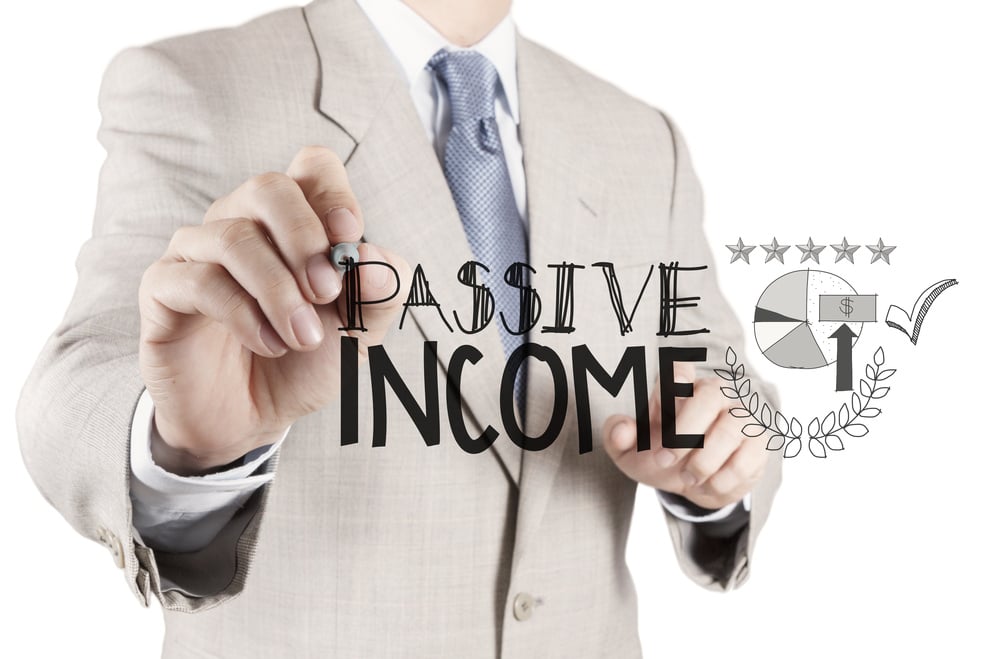5 Retirement Investments for Passive Income You Probably Haven’t Thought Of
Whether you’re looking to retire early from your W2 job or build a large nest egg for later in life, several investments can provide the passive...
6 min read
Rent To Retirement : Oct 31, 2024 7:00:00 AM

Would you invest in real estate if you didn’t have to deal with all of the management, maintenance, and headaches of rental property investing? Passive real estate investing could be the perfect alternative strategy for you. In this guide, we’ll discuss the differences between passive and active investing, the pros and cons of passive real estate, and the type of property that gives you passive benefits with active income!
Summary:
Passive real estate investing means you, as the investor, don’t have to actively manage the real estate investment but still reap the rewards of investing. Passive real estate investing is often best for investors who have busy day jobs or personal lives or those who just want passive income from real estate without the headaches.
To determine whether you should passively or actively invest, you should be familiar with the differences between these strategies. Here are the areas where passive and active investing diverge:
Passive investors have operators, partners, and property managers to oversee the properties. Active investors, however, usually self-manage their properties and assume the responsibilities of a landlord.
Management isn’t free! It costs money to have someone oversee your investments and handle the problems you don’t want to deal with, which is why passive real estate investments typically have lower returns than active investments.
Tax benefits are one of the biggest advantages of real estate investing, but there are significantly more perks for active investors. Passive investors don’t enjoy the same rental property tax deductions and, in many cases, cannot use their passive losses to offset active income.
Real estate is one of the best wealth-building vehicles, but whether you invest passively or actively comes down to how you value time and potential returns.
If you’re looking to grow your wealth quickly, active investments like self-managing rental properties, flipping houses, or performing renovations may be best for you. If you are closer to retirement, have a high-income (or high-demand) day job, or have a busy personal life, passive real estate investments may be best.
What if there was a way to earn active income as a passive investor? Enter turnkey rentals. These properties combine the best of both worlds, giving you the high cash flow of regular rentals but with fewer maintenance and repair costs since the homes are newly renovated or build-to-rent new construction properties.
Plus, they come with property management, so you don’t have to deal with tenants, marketing, evictions, and other issues you don’t have time for!
Are you looking for a hands-off investment that allows you to profit as the housing industry grows? Here are some of the most popular ways to invest in real estate passively.
Real estate investment trusts allow you to purchase shares of a company that owns and manages investment properties. Much like when you buy stocks, you’ll receive regular dividends, and the amount of your investment will grow as the company appreciates.
With REITs, you can invest in real estate anywhere in the world without ever having to manage properties. You also don’t need a large amount of capital to get started!
Like many passive investing strategies, you have no control over the properties, how they are managed, and when they are sold. Returns are often smaller than most active returns, as profits are shared among many shareholders.
With a real estate syndication, investors pool their money together to buy a property (or multiple properties). The operator is responsible for managing the investment and distributing payments to investors as the property performs.
A syndication gives the investor access to larger real estate projects than they would be able to take down on their own. While syndications have higher minimum investment requirements than REITs, you can invest with as little as $25,000 in some cases—which is less than many 15% or 25% investment property down payments.
Did you know Rent to Retirement offers LOW down payment options on turnkey real estate?
Similar to REITs, syndications don’t give investors control over how properties are managed, and returns are often lower since profits are shared among several investors (plus the operator). Syndications are also highly illiquid, and if there is a capital call, you may even be asked to increase your investment. What’s more, you usually need to be an accredited investor to invest in a syndication!
Real estate crowdfunding is the process of pooling funds from investors via an online platform to purchase a larger property (or multiple properties) that the average investor can’t afford. These assets range from retail or office spaces to new development.
Unlike many syndications, crowdfunding allows non-accredited investors to participate and has no income requirements. Minimum investments may be as low as $1,000, making it a viable real estate investing strategy for beginners.
Crowdfunding is a relatively new investing opportunity and lacks regulation compared to other opportunities. Investors also have little to no control over how their portfolio is managed or when it is sold.
Private money lending is the process of loaning capital to investors and receiving a greater return as the money is repaid to you. This could allow your money to work harder for you, and it’s an equally attractive option for investors who need short-term financing (between a few months and a few years) or don’t want to go through the banks for a traditional mortgage.
A private money loan is more flexible than a mortgage, giving you and the investor complete control over the terms of the loan. What’s more, you don’t have to do any work beyond vetting the borrower and structuring the agreement. Just sit back and collect a monthly check!
The biggest downside of private money lending is that you don’t have any control over the investment or the borrower. If their deal goes south or they default, you could face significant losses.
Get high returns and fewer headaches with turnkey rentals!
Like any investing strategy, passive investing has several advantages and disadvantages. Carefully weigh the pros and cons of passive investing to determine if it’s the right strategy for you.
Finding renters, collecting rents, and handling maintenance requests can quickly amount to a full-time job. With passive investing, you delegate all of these responsibilities to someone else!
Passive investors have access to fewer tax benefits than active investors, especially if they don’t have real estate professional status (REPS). For example, you cannot reduce taxable income with rental property losses.
You can passively invest in real estate all over the world, exposing you to a wide range of markets and asset types. Investments like REITs allow you to diversify across multiple industries!
While passive real estate returns may outpace many other markets, they can’t compete with the financial upside of owning and self-managing rental properties.
Depending on the investment, you could access your money faster than if you were to own a property outright (which would require you to list your property for sale and find a buyer). For example, you can often sell a REIT and get your money instantly.
Passive investors have very little (if any) say over how properties are managed, improved, or sold. You don’t get to make the money-making decisions!
Although you’re not analyzing properties, dealing with tenants, or paying for repairs, passive investing involves its fair share of risk. Here are some of the biggest potential downsides to keep in mind before diving in:
An operator or partner is often the difference between a good and bad passive investment. Someone handling a property for you can be great if they’re experienced but deadly if they aren’t. You can mitigate some of this risk by carefully vetting the operator and investment on the front end.
Most real estate investments, active investments included, are relatively illiquid. While certain passive investments, such as REITs, may offer more opportunities to sell, investments like syndications can lock up your capital for years.
If you’re not careful, you can easily be swept up in the bravado of a good presentation or be persuaded by numbers that seem too good to be true. Make sure you do your own research, or become an active investor instead and maintain full control of your investments!
If you’re not interested in being a landlord, dealing with tenants, and making repairs but still want to build wealth through real estate, passive real estate investing might be the best strategy for you.
Better yet, you can get passive and active benefits with turnkey real estate. These properties are managed for you and require a very low time commitment. At the same time, you get to enjoy the advantages of active investing, which include more cash flow, better tax benefits, and more control over your investments!
While passive real estate investing could afford you more time, there are also a few downsides. Passive investors enjoy fewer tax benefits, lower returns, and less control over their investments.
Yes, there are several ways to invest in real estate without the burden of managing and maintaining the property. Real estate investment trusts (REITs), syndications, and crowdfunding are a few of the most popular passive investing options.
Turnkey rentals combine the best of passive and active investing. These low-maintenance rentals are professionally managed for you, but you also get the high returns and tax benefits of ownership.

Whether you’re looking to retire early from your W2 job or build a large nest egg for later in life, several investments can provide the passive...

As high-income earners, doctors have even more investing opportunities than the average person, allowing them to build wealth and even fast-track...

Passive real estate investing is a perfect option for busy or risk-averse investors who want to build wealth with minimal time and effort. Unlike...